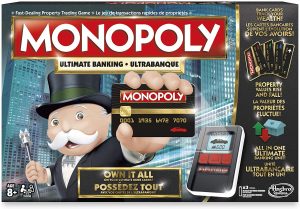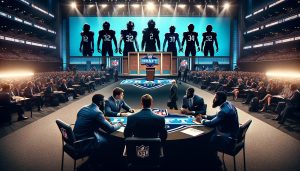The image of Kool Aid Man is a familiar one for many. His jolly and brightly-colored face has been smiling back at us from commercials to Kool Aid juice packets. Many people might consider him a part of their childhood—no different from the likes of Mickey and Minnie Mouse.
However, over the years, he has undergone quite the redesign. From being a mere anthropomorphic pitcher of juice back to one that packs more of a punch. We’ve seen him in Family Guy and SNL, and even got Kool Aid Man funko pop designs. Now, get to know all about his history and that of other popular mascots over the years.
Who is the Kool Aid Man?
He might appear youthful but the Kool-Aid Man is nearing his 50s. In that time, he has fed dinosaurs, learnt how to surf and skateboard, and even swam with the sharks. He has even played lead guitar in a band and, of course, starred in a multitude of commercials that have been watched by millions. But how well do we really know the guy?
In 1954 that “Pitcher Man”, as the Kool Aid logo was once known then, was nothing more than a drawing by Marvin Potts, the art-director of an NYC-based ad agency. Potts was inspired by his son tracing smiley faces on a frosted windowpane and later added the pitcher body. It was simple yet memorable and left a good impression on kids, too.
The design went well with General Foods, the company that had just purchased Kool-Aid from its master mind, Edwin Perkins. They needed a way to market the product based on the “a 5-cent package makes two quarts” concept and Potts pretty much nailed it with his idea. Potts’ design stuck and was highlighted in all of the advertising put out by Kool Aid.
The First Kool Aid Man
When Kraft Foods acquired General Foods in the 70s, they became the new owners of Kool Aid, too. The beloved mascot underwent a redesign and was given legs and arms. In 1975, he was given a name and the first Kool Aid Man costume was made. The next big step for him? A life of glitz and glam. You could say the guy was basically born in the spotlight.
With this new mascot, Kool Aid Man was able to do photoshoots and greet people in public. He became no different from an action figure and was pretty much thrown into doing all sorts of things. This lovable character was doing extreme sports and breaking down walls, much to the delight of Kool Aid’s younger fans. He even got his own catchphrase, calling out to kids with a simple “Oh, Yeah!”
What Would The Kool-Aid Man Yell Out When Bursting Through A Wall?
If you’ve ever needed an extra boost to get you through the day or a motivational mantra to do something you’re afraid of, try “Kool Aid Man Oh Yeah.” This phrase has maintained its popularity over the years and some might argue it’s on the same level as other catchphrases like “Cowabunga” or “Let’s Volt In.”
What few people know, however, is that it represents Kool Aid Man’s personality as a whole. He’s the guy who does just about everything without fear. “Oh, Yeah!” has become associated with the literal and figurative act of crashing in or through something. It is as important to the mascot’s personality as his friendly-smile and sugary red color.
Hey Kool Aid! The Mascot’s Redesign
Have you ever heard the phrase “drink the Kool Aid”? It pertains to how some people tend to believe in potentially harmful or doomed ideas. While it carries a negative connotation, it also shows the impact the drink has made over the years. That is largely thanks to how it’s been marketed and, of course, the Kool Aid Man.
Did you know that before the mascot, Kool Aid was just another sugary water drink that not many people paid attention to? It was after the first commercial that it really gained household recognition. This just goes to show the “power” Kool-Aid Man has over consumers.
The 1970’s logo was given a whole outfit in 1995, a design that carried through until the 2000s. After decades, however, it was time to redesign this jolly ole man. In 2013, he was designed to have a more human look and pretty much resembled popular video game characters at the time. He was slimmed down and got a set of 22 flavor outfits to choose from. For example, you have these Kool Aid flavors:
- Red Kool Aid Man
- Orange Kool Aid Man
- Blue Kool Aid Man
- Grape Kool Aid Man
- Green Kool Aid Man
There’s even a Trump Kool Aid Man!
Going All-CGI and Maintaining Popularity
The 2013 redesign was made by Saatchi & Saatchi. They gave the Kool-Aid man a new voice, an expanded vocabulary, and even his own Facebook page. Since our favorite pitcher has gone CGI, he is able to do even more stunts. No wonder the Kool Aid Man meme pretty much took over social media by storm! They even put an app together, just in case fans wanted their own photo with him.
He did keep his bold and bright attitude, which continued to appeal to the grown-ups who basically knew him all throughout their childhood. Why is the Kool-Aid man still so popular today? He was able to ride trends without losing his original spirit. The redesigns really helped him stay relevant and relatable. More than just a mascot, he has become a cultural icon, too. Just check out the thousands of Kool Aid Man gif online.
Other Iconic Mascots in Pop Culture
The magic of marketing is creating something that transcends being just a product. We have seen many examples of this over the years, where the mascot’s popularity helped drive public recognition of the product itself. Some have even gone on to become the “face” for that particular item. Just take these guys for example:
Tony the Tiger from Kellogg’s Breakfast Cereals
Ask any kid or adult about who Tony is and they’ll tell you what he represents. He isn’t just the face of the famous Kellogg Cereals, but breakfast cereals as a whole. Sure, there are other mascots that are somewhat popular, but since his debut in 1952 this big cat has had everyone charmed. Like the Kool Aid Man, he has been given a personality that appeals to people of all ages.
Fun fact: Tony the Tiger was designed by Quartet Films, a group of former Disney animators. They also had a hand in creating the Jolly Green Giant and the Baltimore Orioles mascot, to mention a few. He might also be one of the few who has been given a nationality. Tony is Italian-American, though we’re sure his speaking voice gives that way. By the way, did you know Tony the Tiger has a daughter named Antoinette?
Michelin Man from Michelin Tyre Company
The Kool Aid pitcher has competition in this one. The Michelin Man is the star of the Michelin Tyre Company. He is a humanoid figure that is comprised of stacked up white tires, which are also often mistaken for as marshmallows by some. The mascot was introduced at the Lyon Exhibition of 1894 and is considered to be one of the world’s oldest trademarks. Did you know that he actually has a name? Bibendum was taken from the slogan “Nunc est Bibendum” or “Now is the time to drink.”
It was French cartoonist Marius Roossillon who really brought the image to life. He showed Edouard and Andre Michelin a rejected drawing of his, which was meant for a Munich brewery. Depicted in it was a large figure holding a glass of beer. Andre set to work replacing the figure with tires and came up with the first Bibendum design. Fun fact: Bibendum isn’t the official name, but one that has grown along with the figure in popularity. Though, most people still know the mascot for its moniker: “Michelin Man.”
So, between Kool Aid man and Bibendum, who do you think might win an arm-wrestling match?
Rich Uncle Pennybags from Monopoly
Perhaps it’s time we all referred to this gentleman by his full name, Rich Uncle Pennybags. Sure, it’s a mouthful, but doesn’t it make him appear even grander? Even those who don’t play this board game would be able to recognize him. From his top hat, morning suit, bowtie, and that signature moustache.
He first appeared in the game Dig by the Parker Brothers, which was released in 1940. Back then, he was an unnamed character and would not receive a proper moniker until 1946. This was when the game Rich Uncle was introduced. Like modern Monopoly, the game bore his likeness on its box, instructions, and currency.
A little bit of a trivia for those curious. Unlike Kool Aid man, Rich Uncle is said to have been modeled after a real person—businessman J.P. Morgan.
Chester Cheetah from Cheetos
More than just a mere mascot, Chester Cheetah of Cheetos fame is pretty much a brand himself. He’s no different from the Kool Aid mascot. He has his own line of Chester’s Snacks that are comprised of puffcorn, popcorn, and flavored fries. He is also one of the mascots most beloved by the younger generation and it’s easy to see why. Before Chester, the official Cheetos mascot was actually the Cheetos Mouse. It debuted in 1971 then disappeared by 1979.
Our favorite cool cat was introduced in 1986. He was created by Brad Morgan, while Stephen Kane wrote his scripts for the TV commercials. His selling point is his suave and cool persona. Sure, he can get a little “cheesy” with the slogans sometimes, but you cannot deny how adorable Chester Cheetah is. We’d say he’s at the same level as our Kool-Aid man.
Did you know that Chester was also meant to have his own children’s program for Fox Kids? However, this never pushed through because debate over the fact that he is an advertising character erupted and production was halted.
M&M’s Spokescandies from Mars
Why have one when you can have an entire group of mascots for your brand? This is what M&M’s came up with when they introduced their characters. The gang comes in all shapes and sizes, much like the beloved chocolate candy, and each has a personality of its own. In 1954, however, there were only two characters known as plain and peanut.
Today, however, there are a total of seven M&M characters. Red (milk and dark chocolate), Yellow (peanut), Blue, (almond and raspberry), Green (dark chocolate mint and peanut butter), Orange (crispy and pretzel), Brown (fudge brownie), Cube (caramel), and Pretzel Guy (pretzel).
Here’s some quick M&M trivia for you: An advertisement aired during Super Bowl LII shows Red transforming into a human. In it, he was portrayed by actor Danny DeVito. What about a Kool Aid man human version next?
Colonel Sanders from KFC
Last, but certainly not least, we have the colonel himself. Among the mascots on our list, this is the only one that’s based on a real person. Colonel Harland David Sanders was an American businessman who also established Kentucky Fried Chicken. One little known fact about him is that the distinction “colonel” isn’t a military rank, but an honorific title awarded by the Commonwealth of Kentucky.
He has since passed, but the symbol lives on. The “colonel” mantle has been taken on by many artists throughout the years and is as popular as its cartoon version. The likes of Randy Quaid, Darrell Hammon, Rob Lowe, and Billy Zane have all held post at one point. Ronald McDonald might stand out more, but it’s The Colonel who has appeared in the DC Comics multiverse as an actual character. He even has his own trilogy written by Tony Bedard.
Who knows? Maybe one day, there would be Kool Aid Man comics. Want to learn how to draw Kool Aid man? Check out our easy drawing guide.
In Closing
Love them or hate them, brand mascots help give a brand more personality and human appeal. Just look at how the Kool Aid man adds more life and charm to the sugar water brand. It really is no different from using models or celebrities. Did you know the Kool Aid Man has Twitter? It’s all part of the narrative they’re trying to sell people and in this case, it certainly is effective.




